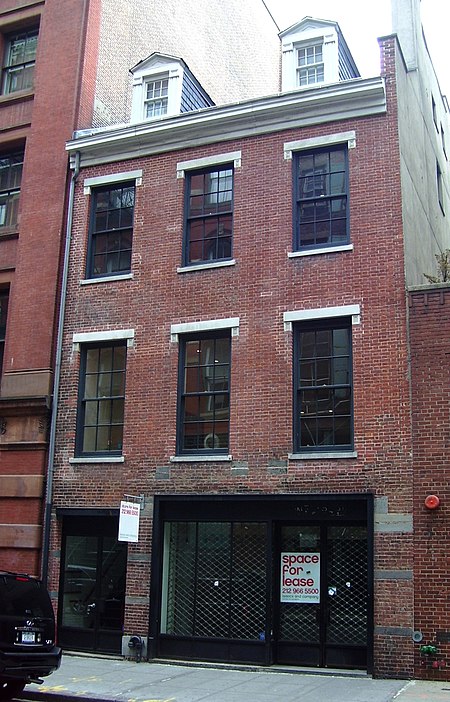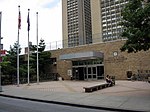Mercer Street (Manhattan)
New York City road stubsSoHo, ManhattanStreets in ManhattanUse American English from October 2020Use mdy dates from October 2020

Mercer Street is a street in the New York City borough of Manhattan. It runs north to south through Greenwich Village and SoHo neighborhoods, from East 8th Street past West Houston Street to Canal Street. The street was previously called First Street and Clermont Street, but was renamed in 1799 for Hugh Mercer, a Scottish-American brigadier general who died at the Battle of Princeton, which came about due to his advice to George Washington to march on Princeton. Its coordinates are 40°43′32.24″N 73°59′51.99″W
Excerpt from the Wikipedia article Mercer Street (Manhattan) (License: CC BY-SA 3.0, Authors, Images).Mercer Street (Manhattan)
Mercer Street, New York Manhattan
Geographical coordinates (GPS) Address External links Nearby Places Show on map
Geographical coordinates (GPS)
| Latitude | Longitude |
|---|---|
| N 40.725622222222 ° | E -73.997775 ° |
Address
Mercer Street
Mercer Street
10012 New York, Manhattan
New York, United States
Open on Google Maps






